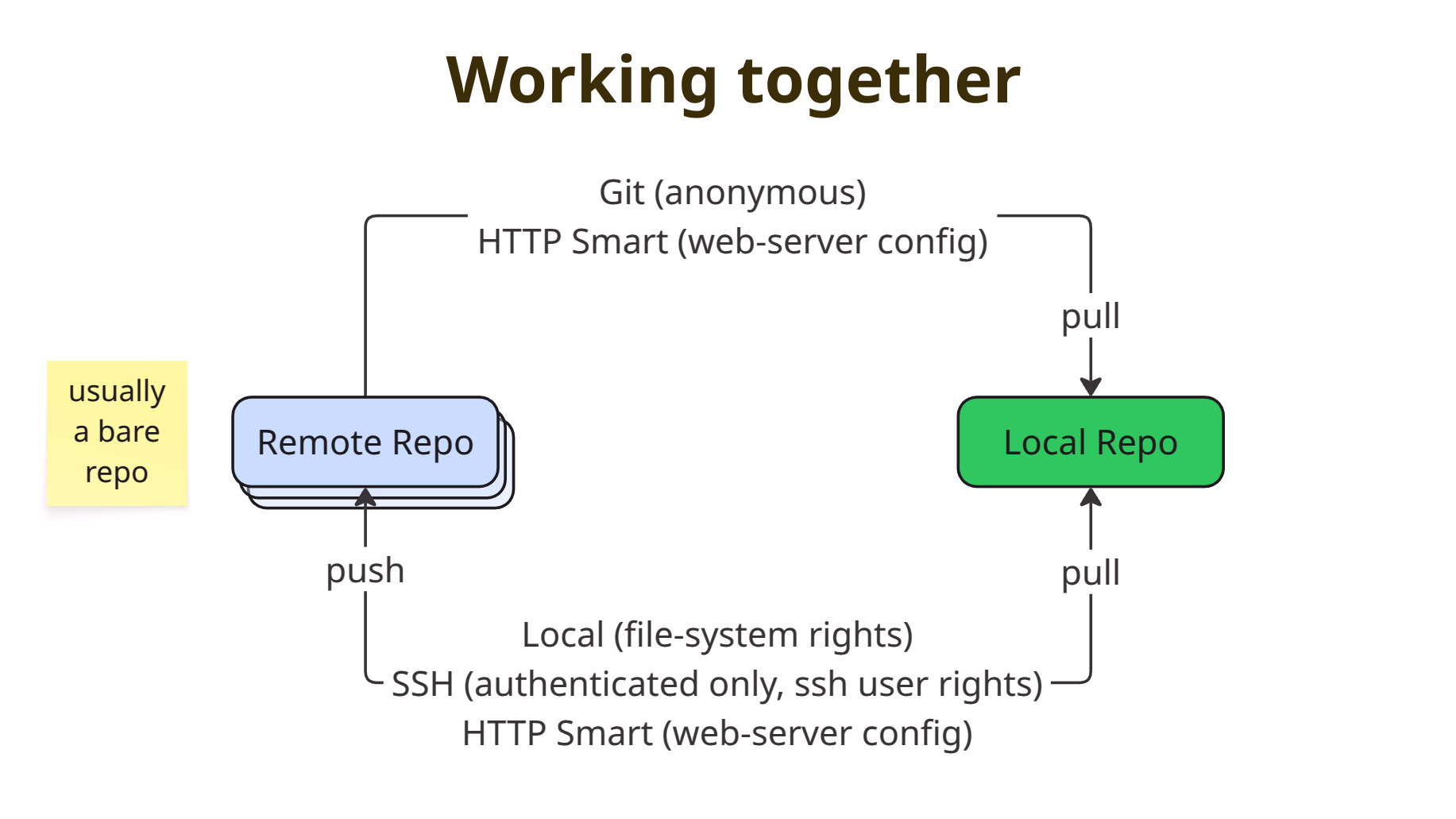Remotes
When you are using git chances are high you use it in a collaborative setting. Chances are also high you will use it with remotes set and not via e-mail.
We will focus on the simple setups. Your repository has one remote from where it pulls and to where it pushes.
Protocols

Git support various protocols to talk to remotes. One of the most used protocols when it comes to read/write access is ssh. For read only access there is the git and smart http protocol. Not every protocol can be used to pull and push.
The smart http protocol, the ssh protocol and the local protocol can be used in pull and push settings. Depending on their configuration the use may or may not be able to push to the repository. The git protocol is strictly read only.
The local protocol can work with absolute paths or with a URL like
file:///share/gitrepo. When using the URL git uses the same
methods for transfer as it is using over network.
Remote repository
The remote repository is usually a bare repository. Bare means it
does not have a working tree and only consists of the git
folder. It can be initialized with git init --bare.
Cloning
To get a local copy of the remote, we use
git clone remoteURL, this clones the remote into a
directory named like the remote repository. If you need to clone into a
specific local directory, use
git clone remoteURL localDir.
Interacting with the remote
Use git remote -v to print the remotes set up for your
repository. You also can edit the remotes with the
git remote command. By convention the first remote is named
origin.
Fetch
git fecth downloads the remote references and objects
but does not change anything locally. Your head, index and working tree
stay untouched.
Pull and Push
Pull and push either pulling changed from the remote or pushing them
to it. Git needs to be able to connect the remote branch and the local
branch. The remote branch is name tracking branch.
To set up a tracking branch for your local branch, use
git push -u remoteName branchName. Git is also helpful if
you push without setting one up. It will fail but print the needed
command.
Diverged Histories: Force Pushing and Resets
There will come a time either you changed your local history and the remote will not accept it, or some colleague did overwrite the remote with a changed history. This can be needed after a rebase or squash. Or simply after some cleanup.
When someone else works on the same branch, talk to them before performing a force push. This is one of the rare events where recovering lost work can be tricky.
Force Push
Git know two variants of forcing the remote to accept the local changes and overwrite the remote:
git push --force-with-leasewill only overwrite if the remote has no new commits compared to your local clonegit push --forcewill overwrite without any hesitation
Resetting to a force pushed branch
Imagine someone force pushed and you want to have your local branch reflect the remote one. There are multiple options:
git switch otherBranch,git branch -D branchNameand thengit switch branchNamegit branch -m newBranchNameand thengit switch branchNamegit reset --hard origin/branchName
The reset will move the HEAD to the tip of the remote branch and reset your index and working tree.
Exercise
Have a look at the remotes exercise. This exercise contains a setup script which setups a local remote and will guide you through cloning and interacting with a remote. It will even take a peek inside the remote.